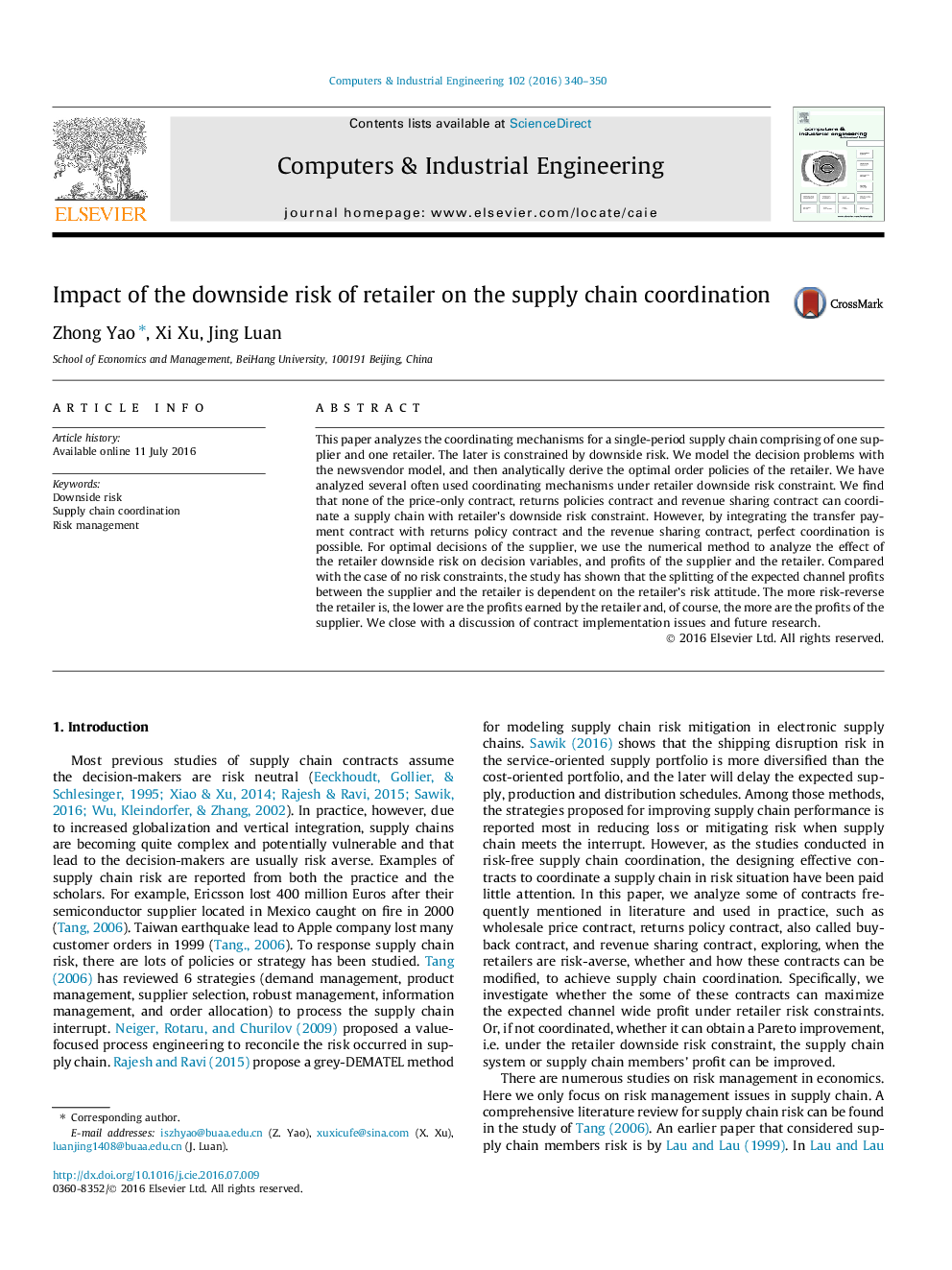| Article ID | Journal | Published Year | Pages | File Type |
|---|---|---|---|---|
| 5127956 | Computers & Industrial Engineering | 2016 | 11 Pages |
â¢The transfer payment plus a contract can mitigate the down side risk effect on the supply chain performance.â¢Only return policy and revenue sharing contract plus transfer payment can coordinate the risk supply chain.â¢The splitting of the expected profits between the game players is dependent on the retailer risk attitude.
This paper analyzes the coordinating mechanisms for a single-period supply chain comprising of one supplier and one retailer. The later is constrained by downside risk. We model the decision problems with the newsvendor model, and then analytically derive the optimal order policies of the retailer. We have analyzed several often used coordinating mechanisms under retailer downside risk constraint. We find that none of the price-only contract, returns policies contract and revenue sharing contract can coordinate a supply chain with retailer's downside risk constraint. However, by integrating the transfer payment contract with returns policy contract and the revenue sharing contract, perfect coordination is possible. For optimal decisions of the supplier, we use the numerical method to analyze the effect of the retailer downside risk on decision variables, and profits of the supplier and the retailer. Compared with the case of no risk constraints, the study has shown that the splitting of the expected channel profits between the supplier and the retailer is dependent on the retailer's risk attitude. The more risk-reverse the retailer is, the lower are the profits earned by the retailer and, of course, the more are the profits of the supplier. We close with a discussion of contract implementation issues and future research.
